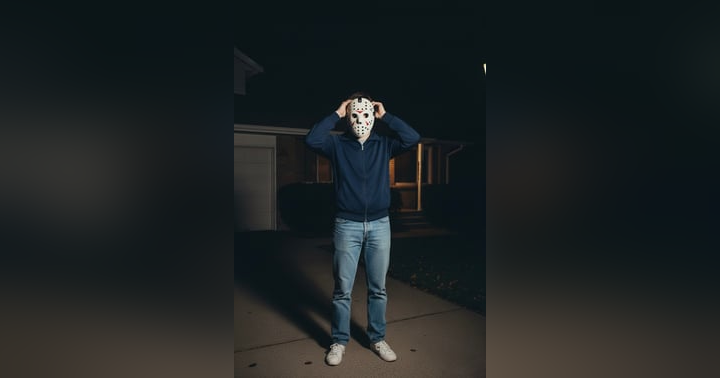The Man Who Lived in the Attic: The Denver Spider Man Story

The Unlikely Beginnings of Theodore Coneys: A Life Shaped by Illness and Isolation
Most of us stand at our refrigerators, pondering snacks or leftovers, blissfully unaware that such a mundane moment could mark the end of a life. But for one man in Denver, Colorado, it did—his final moments unexpectedly tied to a figure named Theodore Coneys.
Born in November 1882 in Illinois, Theodore’s life was an unrelenting uphill battle. From his first breaths, he faced challenges that would define him. The Great Depression loomed far in the future, but Theodore was convinced he wouldn’t live to see it.
Theodore entered the world with a body that seemed destined to betray him. His lungs were weak, his heart weaker still. Doctors delivered grim forecasts to his parents: avoid physical activity at all costs if he hoped to survive even a fraction of a normal lifespan. No running, no school, and—most devastatingly for a boy of his era—no baseball.
Confined to the indoors under his mother’s watchful eye, Theodore spent his days battling illness after illness. Despite her tireless care, doctors remained unflinching in their predictions: Theodore would be lucky to see his eighteenth birthday.
This ominous shadow shaped Theodore’s psyche. While most kids dream of futures filled with possibility, Theodore saw nothing but an impending void. Resentment festered. Each day, he watched other children run and play, their carefree laughter cutting like glass. He hated them—not for their joy, but for the normalcy he’d never know.
The Coneys family dynamic was one of desperation. His parents worked tirelessly to protect a son they feared they’d lose at any moment. But fate, already cruel, had more heartbreak in store.
And then, tragedy struck.
A Father’s Death and a Life Adrift: The Tragic Path of Theodore Coneys
When Theodore Coneys was still young, his father, Thomas, passed away. The loss left Isabella Coneys, Theodore’s mother, to juggle the impossible—caring for a chronically ill child while scraping together a living. With no better options, Isabella packed up her fragile son and followed work across the country, landing in Denver, Colorado. She took a job as a housekeeper, balancing long hours and meager pay with the constant vigilance required to keep Theodore alive.
But Theodore was often left alone. Isolation became his constant companion, fostering a toxic brew of bitterness and boredom. Against all odds, though, his eighteenth birthday came and went. The bad heart, the frail lungs—none of it had claimed him yet.
This unexpected longevity brought its own cruel twist. Theodore had always believed he’d die young, so he never prepared for adulthood. No schooling, no trade, no plan. Now, with his mother also gone, he was left floundering, unequipped for the harsh realities of independence.
A Struggle to Survive: Theodore’s Failed Attempts at Stability
Theodore drifted through odd jobs—bookkeeping, advertising, sales—but his sickly appearance and frequent absences sealed his fate at each attempt. He was pale, thin, and unreliable in the eyes of employers. Time and again, Theodore found himself back where he started: unemployed and increasingly destitute.
Eventually, the streets became his home. Alleyways, doorways, and bridges offered scant shelter, but Theodore was not alone in his despair. The Great Depression had uprooted lives across the nation. Yet, while many managed to claw their way back, Theodore simply didn’t have the tools—or the health—to recover.
A Familiar Face: Phillip Peters’ Lifeline
For years, Theodore survived on the kindness of others. One such kindness came from Phillip Peters, a retired railroad worker and family man. Phillip and Theodore had first crossed paths through the Denver Guitar Club decades earlier, when Theodore was just seventeen. Over the years, their connection had evolved into an occasional lifeline.
The pattern was simple: Theodore would appear at Phillip’s doorstep, desperate and starving. Phillip, generous to a fault, would feed him, sometimes slip him a little money, and send him on his way. It was a quiet act of charity that spanned decades.
But in 1941, at the age of fifty-nine, Theodore turned up at Phillip’s home once more. This time, however, the encounter would not follow their usual script. Instead, it would spiral into an event that neither man—and no one in Denver—could have imagined.
A Tragic Turning Point: Theodore Coneys and the Fateful Night at Phillip Peters’ Home
In 1941, Phillip Peters found himself in a challenging season of life. His wife was in the hospital, recovering from hip surgery, and Phillip divided his days between visiting her and relying on his generous neighbors, who ensured he had meals and companionship. But one evening, when Theodore Coneys came knocking at Phillip’s door, the usual routine took a dark and unexpected turn.
Phillip wasn’t home. The door was unlocked, as it often was in those days. Theodore, desperate, sick, and weary of the streets, let himself in.
“I went in and stole some food,” Theodore later admitted. “I was in bad shape, my lungs were giving me a lot of trouble, and I was at the end of my rope. Fall was coming on, and I couldn’t face another winter on the road. I had to have a place to stay… I found the hole in the closet, climbed through, and slept and slept.”
A Hidden Refuge: Theodore’s Life in the Attic
The “hole” Theodore mentioned was a trapdoor in the closet, barely larger than a cigar box lid. It led to the attic—a cramped, suffocating space that he decided to make his new home. For the next five weeks, Theodore lived undetected, surviving on stolen scraps of food and the unsettling thrill of hiding in plain sight.
Then came the night when Theodore’s clandestine existence collided with Phillip’s daily routine.
Theodore, believing Phillip was napping, crept downstairs to raid the kitchen. To his shock, Phillip appeared instead. It had been nearly thirty years since their last face-to-face meeting, and Theodore wasn’t sure if Phillip even recognized him. Any potential for a calm exchange vanished as the situation escalated into violence.
The Fatal Confrontation
At seventy-three, Phillip Peters was still in better health than his sickly intruder. But Theodore, hardened by years of hardship and now accustomed to the physical exertion of hoisting himself into the attic, had surprising strength.
Phillip grabbed his walking stick and attacked, but Theodore retaliated. He wielded an antique gun he’d found in the house, striking Phillip repeatedly until the gun shattered. Fueled by desperation, Theodore grabbed a metal poker from the fireplace and delivered the fatal blows, killing Phillip in his own kitchen.
Discovery of the Crime
Phillip had been expected for dinner at a neighbor’s house that night. When he didn’t arrive, the concerned neighbor went to check on him. She knocked but received no answer. Worried, she gathered a group of neighbors, and a young girl in the group found an open window and climbed inside.
Moments later, her terrified screams filled the night air. Phillip Peters had been found, but the scene that awaited the neighbors and police was nothing short of horrifying.
A Case of Locked Doors and Unanswered Questions
When investigators first combed through Phillip Peters’ home, they uncovered no signs of a robbery. Phillip’s watch and money were untouched. Even more puzzling, every door and window was locked—some even bolted from the inside. The scene defied logic, leaving the police with one unnerving conclusion: it seemed as though Phillip had been killed by an unseen force.
The trapdoor to the attic was discovered during the investigation. However, its diminutive size convinced authorities that no human could have possibly used it, and they dismissed it as irrelevant.
Strange Happenings in a House Full of Memories
After Phillip’s murder, his wife was finally discharged from the hospital. Despite the tragedy, she returned to the home where she had raised her children and spent over fifty years of her life. But something had shifted in the house—something she couldn’t explain.
Strange noises plagued her nights. The walls seemed to rattle, objects inexplicably moved, and footsteps echoed in empty hallways. One night, she was so startled that she fell out of bed, re-injuring her recently repaired hip.
Unwilling to leave her beloved home, Phillip’s wife hired a live-in nurse to care for her. But the nurse, too, began hearing rattles and whispers. One night, she caught a fleeting glimpse of a figure vanishing around a corner—a moment she would later describe as seeing a ghost.
The police, who had been keeping tabs on the house, investigated again but found nothing. Still, the disturbances persisted, growing more unnerving with each passing day.
The “Ghost” Revealed
The breaking point came one night when the nurse heard a sound in the kitchen and rushed downstairs. There, at the base of the stairs, stood a figure. His shaggy hair hung in wild tangles, his clothes were in tatters, and his skin was ghostly pale. Convinced she was face-to-face with a specter, the nurse screamed.
The figure disappeared, and so did the nurse. She quit on the spot, refusing to return. Soon after, Phillip’s wife moved in with her son, leaving the house vacant.
Neighbors, however, reported strange happenings. Lights flickered on and off. A face—pale and gaunt—was occasionally seen peering from the windows.
The Shocking Discovery
During a routine police check of the now-abandoned home, officers heard a faint clicking noise coming from upstairs. Following the sound, they discovered the closet’s trapdoor slightly ajar.
As one officer opened the door, he saw two legs disappearing into the attic. Without hesitation, the officer grabbed hold of the intruder and dragged him down. Pieces of filthy, tattered clothing tore away as the man struggled.
At the station, the mysterious figure revealed himself to be Theodore Coneys. He confessed to everything, including Phillip’s murder and the months he spent living undetected in the attic.
“Whenever I heard [Phillip] downstairs, I kept real still. Then I got bolder and used to shadow him from room to room. It was a sort of game. It gave me a thrill. It was the first time in my life I’d ever had anyone at my mercy, but I didn’t want to hurt him.”
A Coffin-Sized Hideout
Investigators climbed into the attic where Theodore had been hiding. The space was no larger than a coffin, covered in cobwebs and dust. His “bed” was cobbled together from an old ironing board and stacks of magazines.
“A man would have to be a spider to stand it long up there,” one officer remarked.
Justice for Phillip Peters
Theodore Coneys, dubbed the “Denver Spider Man” by the press, was sentenced to life in prison. He spent the remainder of his days behind bars, dying at the age of eighty-four.




